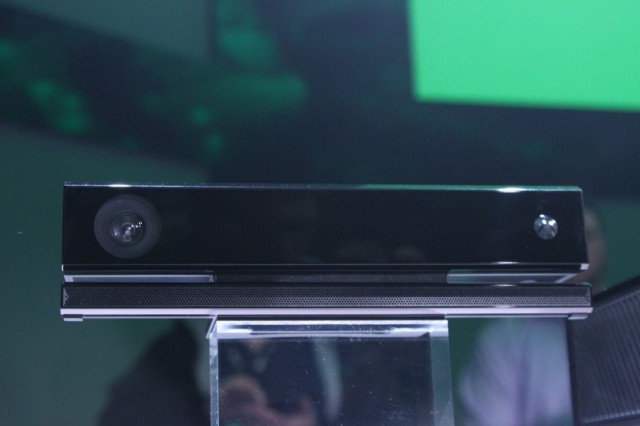
When Microsoft announced a special next-generation Kinect for Windows pre-release developer program earlier today, the move got us wondering whether Windows-based tinkerers couldn't just plug the Kinect that came with the Xbox One into their PC instead, as hackers did almost immediately after the release of the original Kinect for Xbox 360. Unfortunately, the answer is no. Microsoft has confirmed to Ars Technica that the new generation Kinect that comes packaged with every Xbox One console has a proprietary connector that can not be plugged directly into a PC and that Microsoft is not planning to release an adapter to allow such cross-platform use.
"The Kinect for Xbox One sensor will not have an adapter that allows it to plug into a computer," a Microsoft spokesperson told Ars in an e-mail. Instead, "the new generation Kinect for Windows sensor will connect to computers using a standard USB3 port [emphasis added]."
Microsoft says the Xbox One and Windows versions of the new generation Kinect are "built on a shared set of technologies" and have similar capabilities such as 1080p video, an active IR mode, and a wider field of view than the first Kinect. But that doesn't mean the devices are exactly the same, or designed to be interoperable with the other platform.
"The new generation Kinect for Windows sensor will be a fully tested, licensed, and supported Kinect experience on Windows," the spokesperson told Ars. "Kinect for Xbox One is being built for and tested with the Xbox One."
Of course, hardware hackers may well develop their own adapter to allow the Xbox One Kinect to talk to a PC. Even in that case, though, Microsoft says the Xbox One's Kinect "is not licensed for commercial use, supported, or under warranty when used on any other platform, including Windows."
The original Kinect for Xbox 360 also features a proprietary plug that is designed to be inserted directly into a specially shaped slot on later-model Xbox 360 systems. This plug provides both data transfer between the console and the Kinect and power directly to the camera. However, Microsoft also includes an adapter with each Xbox 360 Kinect that allows the unit to plug-in to standard USB ports on older Xbox 360 models and to draw power from a standard wall outlet at the same time.
Windows-based hackers almost immediately used this adapter to plug the original Kinect into their PCs and tinker with the new depth-based camera technology, which was much cheaper than other 3D cameras at the time. A variety of PC demos and unofficial PC drivers were available for Kinect months before Microsoft launched its official Windows SDK for the device, and well before Microsoft split off a separate, USB "Kinect for Windows" sensor.
Things will be different this time around. Even if you get your hands on an Xbox One launch unit this November, you'll have to sign up for Microsoft's newly announced pre-release Kinect for Windows developer program and pay $399 to use the new Kinect on a PC at that time. That will get you early access to a "pre-release/alpha" edition of the Windows version of the sensor in November, as well as the final version of the Windows-based Kinect when it is released sometime in 2014 (plus access to official SDKs and development support from Microsoft). Microsoft has not discussed how much the Windows version of the new Kinect will cost when it is released for general availability.
It seems likely that the ability to use the original Xbox 360 Kinect on a Windows machine was an unintended bonus, born of Microsoft's need to offer compatibility with legacy Xbox 360 systems. For the launch of the new Kinect, Microsoft seems committed to producing two highly similar yet distinct versions of the hardware for two different platforms.
reader comments
116